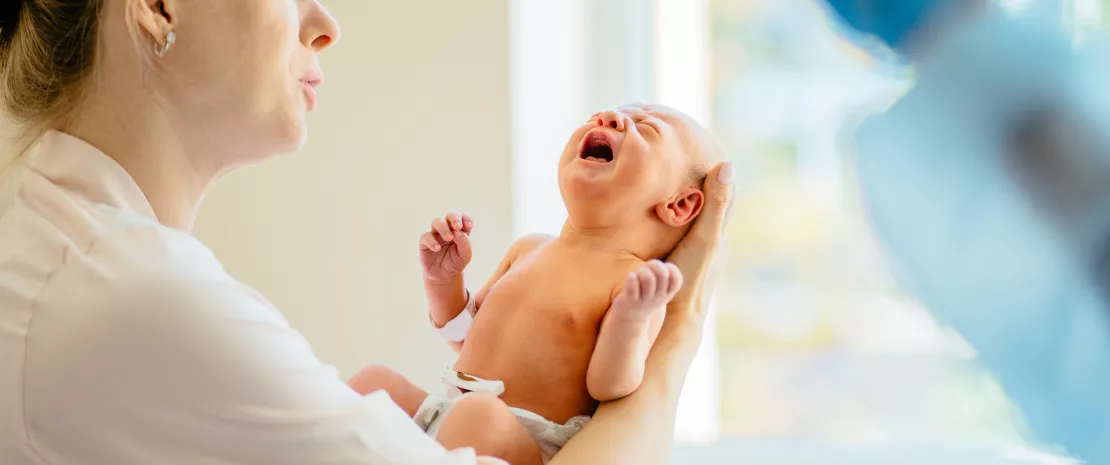L. iners facing trial for causing preterm birth Vaginal microbiota, a key indicator of the risk of preterm birth?
The presence of the bacterium Lactobacillus iners in the vaginal microbiota during early pregnancy appears to be associated with an increased risk of recurrent preterm birth. Could certain bacteria in the Lactobacillus group play a dual role?
- Learn all about microbiota
- Microbiota and related conditions
- Act on your microbiota
- Publications
- About the Institute
Healthcare professionals section
Find here your dedicated section
Sources
This article is based on scientific information

About this article
With 1.1 million deaths each year, preterm birth is the leading cause of death among young children under the age of five. Sadly, misfortune never comes alone, the risk of giving birth to another preterm baby being high, ranging from 15% to over 50%. The earlier in the pregnancy the previous (sidenote: Preterm bitrh Babies born alive before 37 weeks of pregnancy are completed. There are sub-categories of preterm birth, based on gestational age: - Extremely preterm (less than 28 weeks). - Very preterm (28 to less than 32 weeks). - Moderate to late preterm (32 to 37 weeks). https://www.who.int/news-room/fact-sheets/detail/preterm-birth ) , the higher the risk of recurrence.
4-16% Across countries, the rate of preterm birth ranges from 4% to 16% of babies born in 2020. ¹
No. 1 Preterm birth is the primary cause of death in children aged < 5 years. ²
Medical science is searching for solutions, but a lack of knowledge about what causes these recurrences, which are probably multifactorial, limits the effectiveness of the treatments on offer ( (sidenote: Progesterone Female sex hormone secreted after ovulation and during pregnancy. ) , (sidenote: Cervical cerclage A surgical procedure performed during pregnancy whereby a thread is placed around the cervix when there is a risk it may open too easily. ) ,etc.). Could the solution lie partly in the vaginal flora?
This was the hypothesis of a group of researchers who followed 152 pregnant Chinese women at high risk of miscarriage, and their vaginal microbiota, sampled with a cotton swab during early pregnancy (before 16 weeks) and then between 16 and 24 weeks.
The vaginal microbiota
Risk linked to L. Iners.
Follow-up of these women showed that a vaginal microbiota dominated by Lactobacillus iners before 16 weeks of gestation is associated with an increased risk of premature birth. What explains this link? According to the authors, a vaginal flora dominated by L. iners is less stable than one dominated by L. crispatus: the former tends to evolve easily into a flora in which beneficial strains of Lactobacillus no longer reign supreme. In other words, it is less effective at keeping pathogenic bacteria at bay, as has already been shown in the case of Group B Streptococcus.
15-50% Spontaneous preterm birth tends to reoccur with a recurrence rate of 15% to > 50%, which is inversely correlated with the number of gestational weeks in the most recent preterm birth.
However, between 16 and 24 weeks of gestation the link between L. iners and preterm birth is no longer evident, highlighting that early pregnancy is the crucial period, perhaps one day even for intervention on the vaginal microbiota to reduce the risk of recurrent preterm birth. It should be noted that this type of intervention is no longer the stuff of science fiction: one 30-year-old mother who suffered a series of miscarriages after her first child was able to become a mother again after a vaginal microbiota transplant.
Lactobacillus iners: the exception that proves the rule of beneficial lactobacilli?
A vagina whose flora is dominated by lactobacilli is generally considered healthy. However, unlike other lactobacilli, L. iners cannot produce certain molecules ( (sidenote: D-lactic acid Essential for protecting the intimate area by maintaining a low pH, which promotes the growth of lactobacilli and prevents infections. ) , (sidenote: Hydrogen peroxide and bacteriocins Prevent the adherence of pathogens thanks to biosurfactants, whose amphiphilic or “detergent” properties allow them to act on surface tensions and thus create a barrier that limits the adhesion of pathogens. ) , (sidenote: Hydrogen peroxide and bacteriocins Prevent the adherence of pathogens thanks to biosurfactants, whose amphiphilic or “detergent” properties allow them to act on surface tensions and thus create a barrier that limits the adhesion of pathogens. ) , etc.) that repel pathogens.
As a result, L. iners is much less effective at preventing the proliferation of unwanted bacteria. Another problem is that this bacterium tends to interact with our immune system making it lower its guard and leaving the door wide open for other nasty invaders. Furthermore, it has the ability to remodel the cervix, which can also facilitate the invasion of pathogens. Unfortunately, L. iners is also very good at persisting in the vagina: it adheres very strongly to the vaginal walls and is highly resistant, even to antibiotics. 2
Biocodex Microbiota Institute supports SOS Préma
Founded in 2004 on the initiative of Charlotte Bouvard, herself the mother of a preterm baby boy, SOS Préma is a non-profit organization recognized as a user association of public interest by the French Ministry of Health. It aims to give all preterm babies the best chance of growing up healthy. SOS Préma provides support to parents faced with the preterm birth and/or hospitalization of their newborn, including information, advice and guidance, psychological support, social and legal assistance, volunteer visits to the hospital, training for caregivers, etc.
The association also gives families a voice and defends their rights, mobilizing society, the medical profession, and public authorities to raise awareness of the issues surrounding preterm birth and improving care for families.
For more information, visit https://www.sosprema.com













